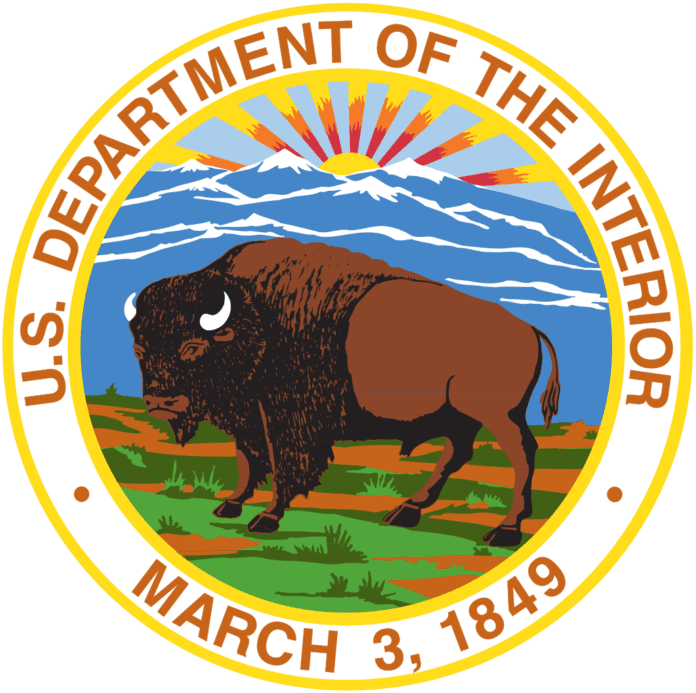Following a community roundtable discussion and site visits with Representative Sharice Davids, Secretary of the Interior Deb Haaland announced the availability of nearly US$660 million in grant funding to clean up legacy pollution through the Investing in America agenda. Resources to clean up hazardous sites will create jobs, catalyze economic growth and revitalization, reduce harmful methane leaks — which is one of the major drivers of the climate crisis — and reduce environmental and public health risks to surface water and groundwater resources critical to US communities and ecosystems.
Kansas is one of 26 states that are eligible to apply for this funding. The state received US$25 million in initial funding, with which the Kansas Corporation Commission is plugging more than 2000 abandoned wells over the next three years. With today’s announcement, Kansas is eligible for another US$25 million.
“The Investing in America agenda is enabling us to confront long-standing environmental injustices by making a historic investment to plug orphaned wells throughout the country,” said Secretary Deb Haaland. “These investments are good for our climate, for the health of our communities, and for American workers. With this additional funding, states will put more people to work to clean up these toxic sites, reduce methane emissions, and safeguard our environment.”
Millions of Americans live within a mile of an orphaned oil and gas well. Orphaned wells are polluting backyards, recreation areas, farmland, and public spaces in urban, rural, and suburban areas. Methane leaking from many of these unplugged wells is a serious safety hazard and is a significant cause of climate change.
The Bipartisan Infrastructure Law is delivering the largest investment in tackling legacy pollution in American history, including through a US$4.7 billion investment to plug orphaned wells. The US$660 million comes from the US$2 billion in formula grants to be provided to states over the coming years.
Plugging orphaned wells advances the goals of the Biden-Harris Administration’s Methane Action Plan, as well as the Interagency Working Group on Coal and Power Plant Communities and Economic Revitalization, which focuses on spurring economic revitalization in hard-hit energy communities. The program is also part of the Justice40 Initiative, which is advancing environmental justice by ensuring that 40% of the overall benefits of certain federal investments reach disadvantaged communities that are marginalized and overburdened by pollution and underinvestment.
The revised grant application guidance is a product of engagement with state partners and public stakeholders and reflects feedback provided on draft guidance that was released on January 30. The guidance encourages states to use project labor agreements and a unionized project workforce for the plugging, remediation, and reclamation of wells, and requires states to:
- Measure methane emissions from orphaned wells plugged with formula grants.
- Screen for groundwater and surface water impacts caused by orphaned wells.
- Factor into their prioritization methods polluting wells nearby communities of color, low-income communities, and Tribal and Indigenous communities.
The US$660 million in funding is in addition to US$560 million in initial orphaned well grant funding that was provided in August 2022, which has allowed states to plug and remediate over 2800 wells on state and private lands so far. Based on the formula announced in January 2022, states are eligible to apply for the below allocations.
The 26 states eligible to apply for a Phase 1 formula grant have from today until December 31, 2023, to submit their applications, which must be done through the GrantSolutions website. Additional phases of funding will be available in the future.
Total And Phase 1 State Formula Grant Eligibility
| State | Total Formula
Grant Eligibility |
Phase 1
Eligibility |
| Alabama | US$1,681,430 | $1,681,430 |
| Alaska | US$28,336,497 | $25,000,000 |
| Arizona | US$4,871,791 | $4,871,791 |
| Arkansas | US$5,589,721 | $5,589,721 |
| California | US$140,870,510 | $35,217,628 |
| Colorado | US$54,064,506 | $25,000,000 |
| Illinois | US$36,875,485 | $25,000,000 |
| Indiana | US$14,076,668 | $14,076,668 |
| Kansas | US$33,666,697 | $25,000,000 |
| Kentucky | US$78,980,737 | $25,000,000 |
| Louisiana | US$86,449,520 | $25,000,000 |
| Michigan | US$5,873,295 | $5,873,295 |
| Mississippi | US$6,830,345 | $6,830,345 |
| Missouri | US$26,925,384 | $25,000,000 |
| Montana | US$5,139,423 | $5,139,423 |
| Nebraska | US$4,151,076 | $4,151,076 |
| New Mexico | US$72,260,163 | $25,000,000 |
| New York | US$44,672,162 | $25,000,000 |
| North Dakota | US$55,266,234 | $25,000,000 |
| Ohio | US$231,028,206 | $57,757,052 |
| Oklahoma | US$205,226,972 | $51,306,743 |
| Pennsylvania | US$305,625,896 | $76,406,474 |
| Texas | US$318,695,029 | $79,673,757 |
| Utah | US$5,229,389 | $5,229,389 |
| West Virginia | US$116,932,226 | $29,233,057 |
| Wyoming | US$40,680,639 | $25,000,000 |
| Total | US$1,930,000,000 | $658,037,849 |
(Source: Department Of The Interior)
In addition to formula grants, states are also eligible for performance grants under the Bipartisan Infrastructure Law. Information on and guidance for these applications will be made available later this year.

















